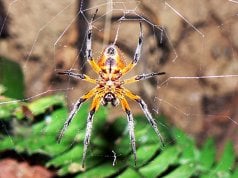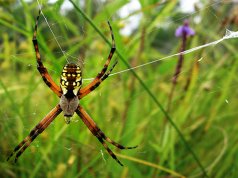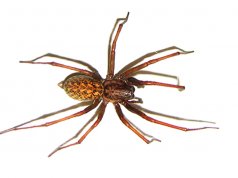The humble ladybug, a creature often celebrated in children’s rhymes and garden lore, is far more than just a pretty face. These small, often brightly colored beetles are ecological powerhouses, fascinating subjects for scientific study, and vital allies in agriculture. Join us on a journey to uncover the intricate world of the ladybug, from its evolutionary past to its crucial role in our present day ecosystems.
Meet the Ladybug: A Garden Gem
Known by many names across the globe, including ladybird and lady beetle, the ladybug belongs to the scientific family Coccinellidae. These charismatic insects are instantly recognizable by their typically dome-shaped bodies, often adorned with vibrant colors like red, orange, or yellow, punctuated by distinctive black spots. While their appearance might suggest fragility, ladybugs are robust survivors with a fascinating life story.
Appearance and Identification
Ladybugs exhibit a remarkable diversity in appearance. While the classic image is a red beetle with black spots, their coloration can range from bright yellow to deep orange, and even black, with spots that can be red, yellow, or absent altogether. Some species even have stripes or intricate patterns instead of spots. Their size typically ranges from 0.8 to 18 millimeters, making them small but noticeable inhabitants of many landscapes.
Where to Find Them: Ladybug Habitat
Ladybugs are incredibly adaptable, thriving in a wide array of habitats across the globe, from temperate forests to tropical rainforests, and even arid deserts. Their presence is largely dictated by the availability of their primary food source: soft-bodied insects like aphids. Therefore, you’ll most commonly find ladybugs in:
- Gardens and Agricultural Fields: Abundant with plants that attract aphids and other small pests.
- Meadows and Prairies: Rich in diverse plant life and insect populations.
- Forest Edges and Woodlands: Where there is a mix of trees, shrubs, and herbaceous plants.
- Urban Parks and Green Spaces: Even in cities, where suitable vegetation exists.
To find a ladybug, look closely on the undersides of leaves, along plant stems, and among flower petals. They are often found on plants that are experiencing aphid infestations, as this is where their next meal awaits.
The Ladybug Diet: Nature’s Pest Control
Perhaps the most celebrated aspect of ladybugs is their voracious appetite for agricultural pests. Both adult ladybugs and their larvae are formidable predators, primarily feeding on:
- Aphids: Tiny, sap-sucking insects that can devastate crops and garden plants. A single ladybug larva can consume hundreds of aphids during its development, and an adult can eat thousands in its lifetime.
- Scale Insects: Small, immobile pests that attach to plants and feed on their sap.
- Mealybugs: Cottony, soft-bodied insects that also feed on plant sap.
- Mites: Including spider mites, which can cause significant damage to plants.
This predatory behavior makes ladybugs invaluable allies to farmers and gardeners, providing a natural and sustainable form of pest control.
The Ladybug Life Cycle: A Metamorphosis Marvel
Like all beetles, ladybugs undergo complete metamorphosis, a four-stage transformation that is nothing short of miraculous:
- Egg: Females lay tiny, oval, yellow or orange eggs in clusters, often on the undersides of leaves near aphid colonies, ensuring a ready food supply for their offspring.
- Larva: Upon hatching, the larvae emerge. These are often described as “alligator-like” in appearance, elongated and spiky, with varying colors depending on the species. They are highly mobile and incredibly hungry, spending their days devouring aphids.
- Pupa: After several molts, the larva attaches itself to a leaf or stem and transforms into a pupa. During this quiescent stage, the insect undergoes a dramatic reorganization, preparing for its adult form.
- Adult: Finally, the familiar adult ladybug emerges, ready to feed, mate, and continue the cycle.
A Deeper Dive: Ladybug Biology and Ecology
For the aspiring zoologist or the curious student, the world of ladybugs offers even more intricate details and fascinating insights.
Evolutionary Journey of the Coccinellidae
The family Coccinellidae has a long and successful evolutionary history, with fossil records suggesting their presence dating back tens of millions of years. Their diversification is closely linked to the evolution of flowering plants and the subsequent proliferation of sap-feeding insects like aphids. This co-evolutionary arms race led to the development of their specialized predatory habits, allowing them to thrive as effective biological control agents. Their distinctive aposematic coloration, a warning to predators, is also a testament to their long evolutionary journey of survival.
Anatomy and Defense Mechanisms
Beyond their spots, ladybugs possess several remarkable anatomical features and defense strategies:
- Elytra: The hard, protective wing covers that give ladybugs their characteristic dome shape. These protect the delicate flight wings folded beneath them.
- Aposematism: Their bright colors serve as a warning to potential predators that they are unpalatable or toxic. This is a classic example of aposematic coloration in the animal kingdom.
- Reflex Bleeding: When threatened, ladybugs can exude a foul-smelling, yellowish fluid from their leg joints. This “reflex bleeding” contains bitter alkaloids, further deterring predators like birds and spiders.
- Overwintering: Many ladybug species, particularly in temperate climates, aggregate in large numbers during colder months. They seek sheltered locations, such as under leaf litter, rocks, logs, or even inside human structures, to enter a state of dormancy called diapause, conserving energy until spring.
Mating and Reproduction
Ladybug reproduction is a carefully orchestrated process. After emerging from overwintering, adults seek mates. Courtship often involves the male approaching the female, sometimes tapping her with his antennae. Mating can last for several hours. Females then lay their eggs in strategic locations, typically in clusters on plant leaves or stems, always close to a reliable food source for the hatching larvae. A single female can lay hundreds of eggs over her lifetime, ensuring the continuation of her species.
Beyond Aphids: A Broader Diet and Ecosystem Role
While aphids are a primary food source, many ladybug species have a broader diet. Some also consume pollen and nectar, especially when pest populations are low, making them occasional pollinators. However, some species are herbivorous, feeding on fungi or even plants themselves, though these are a minority. Their role in the ecosystem extends beyond pest control; they are also prey for birds, spiders, and other insects, forming an integral part of the food web.
Interactions with Other Animals
Ladybugs interact with a variety of other organisms:
- Predators: Birds, spiders, assassin bugs, and even some parasitic wasps prey on ladybugs, their eggs, or larvae.
- Parasites: Certain parasitic wasps lay their eggs inside ladybug larvae or pupae. The wasp larva then develops inside the ladybug, eventually killing it.
- Ants: Ants often “farm” aphids for their sugary honeydew secretions. This can create a conflict with ladybugs, as ants may aggressively defend their aphid colonies from ladybug predators.
Ladybugs and Humanity: From Culture to Conservation
Our relationship with ladybugs is long and multifaceted, spanning cultural symbolism, agricultural partnership, and even challenges posed by invasive species.
Cultural Significance and Folklore
Ladybugs hold a special place in human culture across the globe. They are widely considered symbols of good luck, prosperity, and protection. In many cultures, it is considered bad luck to harm a ladybug. Their association with good fortune likely stems from their beneficial role in gardens and agriculture, saving crops from devastating pests. Children’s songs and stories often feature ladybugs, cementing their image as beloved and harmless creatures.
Ladybugs in Agriculture: Our Tiny Allies
The most significant interaction between humans and ladybugs is their use in biological pest control. Farmers and gardeners intentionally introduce ladybugs to their crops to manage aphid and other pest infestations, reducing the need for chemical pesticides. This practice is environmentally friendly and economically beneficial, highlighting the ladybug’s immense contribution to sustainable agriculture.
Finding Ladybugs in the Wild: A Guide for Animal Lovers
For those eager to observe these fascinating insects, finding ladybugs in the wild is a rewarding experience. Here’s how:
- Timing: Ladybugs are most active during warm, sunny days, typically from spring through autumn.
- Location: Focus on areas with lush vegetation, especially plants that are known to host aphids, such as roses, milkweed, dill, cilantro, and various fruit trees.
- Technique: Gently inspect the undersides of leaves and along stems. Look for the adults, but also keep an eye out for their distinctive larvae and egg clusters.
- Patience: Ladybugs can be camouflaged, so patience and careful observation are key.
- Respect: Observe them without disturbing their natural behavior. Avoid handling them excessively.
Encountering a Ladybug: What to Do
If you encounter a ladybug in the wild, the best course of action is simply to observe it. They are completely harmless to humans. There is no need to intervene unless you are a gardener wishing to relocate them to a pest-infested plant. If one lands on you, simply allow it to fly off on its own. Appreciate its beauty and its vital role in the ecosystem.
Caring for Ladybugs in Captivity: A Zookeeper’s Guide
While ladybugs are best observed in their natural habitat, zookeepers or educators might care for them for display or educational purposes. Here are key considerations:
- Enclosure: A well-ventilated enclosure with plenty of live plant material is essential. A mesh or screen top is preferable for air circulation.
- Diet: The most crucial aspect. Provide a constant supply of live aphids or other small, soft-bodied insect pests. If live prey is unavailable, some species may accept a substitute like honey water or pollen, but this should not be their primary diet.
- Hydration: Offer a shallow water source, such as a moist cotton ball or a misted leaf, to prevent drowning.
- Temperature and Humidity: Maintain conditions similar to their natural environment. Most temperate species thrive at room temperature with moderate humidity.
- Overwintering: If keeping them long-term, research the specific species’ overwintering requirements. This might involve a period of cooler temperatures and reduced food.
- Things to Avoid:
- Pesticides: Absolutely no exposure to any chemical pesticides.
- Overcrowding: Can lead to stress and cannibalism, especially among larvae.
- Lack of Food: Starvation is a common cause of death in captive ladybugs.
- Inappropriate Substrates: Avoid anything that could trap or harm them.
- Handling: Minimize direct handling to prevent stress and injury.
It is also important to be aware of invasive species, such as the Harlequin ladybug (Harmonia axyridis). While also a predator of aphids, this species can outcompete native ladybugs and even prey on their larvae, posing a threat to local biodiversity. Responsible captive care involves ensuring that non-native species are not released into the wild.
The Enduring Charm of the Ladybug
From their striking appearance and fascinating life cycle to their indispensable role in maintaining ecological balance and supporting agriculture, ladybugs are truly remarkable creatures. They serve as a powerful reminder that even the smallest inhabitants of our planet can have an enormous impact. By understanding and appreciating these beneficial beetles, we can all contribute to their conservation and ensure they continue to grace our gardens and fields for generations to come.






![Red Angus Closeup of a beautiful Red Angus cowPhoto by: U.S. Department of Agriculture [pubic domain]https://creativecommons.org/licenses/by/2.0/](https://animals.net/wp-content/uploads/2020/03/Red-Angus-4-100x75.jpg)

